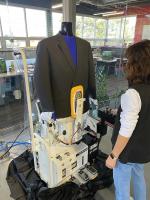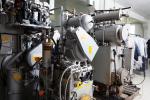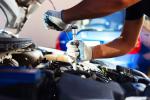CHICAGO — A drycleaning plant can be looked at as if it were a living thing, with all its equipment contributing to keeping it alive. When one of these components breaks down, it can cause a chain reaction that shuts down production. Unlike a living being, however, owners can sometimes have extra equipment installed to take over when something breaks. But, even if the space or expense keeps this from happening, there are still alternatives available.
In Part 1 of this series, we examined factors that go into planning for redundancy, and today, we’ll look at some ways to keep moving even if complete redundancy isn’t an option.
Avoiding the Issue
When it comes to keeping machinery up and running and lessening the need for redundancy, there’s no substitute for taking good care of the equipment you rely on says Vic Williams, Eastern sales manager of equipment manufacturer Union Dry Cleaning, as well as the owner of Impressive Cleaners and Formal Wear in McDonough, Georgia.
“Don’t lag on doing maintenance or making repairs, because it’s going to break when you when you need it the most and you least expect it to,” he says. “Have the necessary, basic parts for repair, and sometimes you have to be creative. If you needed a compressor to run just the drycleaning machine or a few presses, you can probably get a portable air compressor to run items like that. It might not run your shirt units, but it could be a way to get by and run some equipment if you needed to.”
“Maintenance is key to everything,” says Mike Tungesvick, national sales manager for equipment manufacturer Sankosha USA. “Keep your machine clean because a cleaning plant is a lint factory. That lint gets oily and dirty and collects on the equipment, and then you’re behind the eight ball.”
Making maintenance an integral part of their processes is critical, Tungesvick believes, but that might require some research and training for owners, especially in small plants.
“Most equipment is fairly easy to maintain, and some plants are lucky in that they do have a handyman who can maintain every machine, but most don’t,” he says. “And in most of the country, there’s no one anymore to come and fix a piece of equipment, so a lot of owners are getting very mechanical, where they can take care of their machines themselves. Companies like ours offer a lot of support, but the key is that you want to keep on top of your weekly, monthly and yearly maintenance.”
Part of this upkeep, Tungesvick says, is making sure the elements that the cleaner knows will have to be replaced from time to time are properly addressed and aren’t allowed to fail.
“It’s mainly the wearable parts, like belts for your dryers and your washers, drain valves and solenoid valves for your air-operated equipment,” he says. “If you got a cylinder that’s on its last leg, it’s still going to operate. It’ll leak and won’t operate as well as it should, but it’s still going to move, and you’ve got a little more time. If a belt breaks, you’re down.”
“Stay up on your boiler inspections,” Williams says. “It’s usually done every year, and if you replace the ‘wear’ parts, you might not have a problem. For me, I really never went a day at my plant without a boiler. We stayed up on the maintenance every year. If you’re not going to have two of each, then take very good care of the one you have.”
Also, when it comes to maintenance, having employees who are engaged in the business is valuable — they will recognize when equipment needs repair sooner because they are the one using it.
“If you have the staff with this mindset, you can give them ownership of that machine,” Tungesvick says. “If you’ve bought a new shirt machine or new press, you can tell them, ‘This is yours. When you’re done, just wipe it down and keep it clean.’ Get them involved in it. That helps tremendously.”
Come back Tuesday for the conclusion of this series, where we’ll examine the importance of determining the parts needed to keep equipment running, along with another alternative. For Part 1 of this series, click HERE.
Have a question or comment? E-mail our editor Dave Davis at [email protected].























